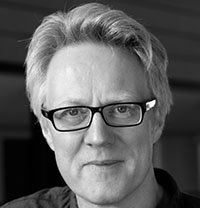By Des Higham
My holiday read this year was Two Girls, One On Each Knee (7): The Puzzling Playful World of the Crossword by Alan Connor, (Particular Books, 2013). It tells the story of the cryptic crossword, cleverly structured around a Contents page consisting of a crossword, whose answers become chapter titles. The book is full of anecdotes, digressions and examples of the crossword setter’s art. In passing, it explains the conventions that make up the “rules of engagement.” It’s a good read for anybody who enjoys twisting and shaping words, and relishes the challenge of discovering an answer that’s ingenuously hidden in plain sight. The title refers to the two-millionth clue written by the world’s most prolific setter, Roger Squires, in a Telegraph Cryptic Crossword (no. 25,303 on 14th May, 2007). The answer, PATELLA, is the medical term for the kneecap, and, of course, most of us have one of these on each knee. By convention, a clue must start or finish with a word or phrase that indicates the answer (one on each knee). It will typically offer a second, usually more convoluted, route to the answer; in this case, PAT and ELLA (two girls). A good clue also conjures up a misleading connotation designed to throw the solver off the scent. Punctuation often adds to the mischief.
Here are two more from the book:
Give short change? That’s a mistake (9) (by Dac, in the Independent, no. 8,145)
Here “change” indicates that we must rearrange some letters. The nine letter word we need is an anagram of “give short” that means “mistake”: OVERSIGHT.
As seen in jab, reach of pro miserably failing to meet expectations (6,2,7) (by Anonymous, from the Times Jumbo, no. 744)
Here, “as seen in” is telling us that the answer is hidden in the text: BREACH OF PROMISE, which agrees with “failing to meet expectations” at the end of the clue.
One of the best-loved crossword setters, Araucaria, died recently: see, for example, “My hero: John ‘Araucaria’ Graham by Sandy Balfour”and “Crossword blog: The A to Z of Araucaria”
The latter lists some of his best work, including
Rise and fall in subsidy (8)
In trickier clues, the secondary route to the answer can be somewhat convoluted. Here, DIE (fall) goes in GRANT (subsidy), to make GRADIENT (rise). Words with multiple meanings are often used to ambush the literal thinker. Mathematicians would be particularly susceptible to the clue
Number of people in a theatre (12) (by Rover, in the Guardian, no. 24,574)
Here “number of people in a theatre” refers to a person whose job is to make people numb in the type of “theatre” where medical operations are performed. In consequence, we arrive at ANAESTHETIST.
I was introduced into the world of the cryptic crosswords several years ago through the time-honored tradition of looking over someone’s shoulder; in this case, belonging to my father-in-law, John. Having picked up the rudiments, I occasionally have a dabble. If I combine forces with my wife, Catherine, we can usually pick off the Everyman cryptic in the Observer (chasteningly described in the book as one of the “less demanding” of the newspaper cryptics). My limited observations from a few department common rooms suggest that mathematics researchers, at least those in the UK, are preferentially drawn to the cryptic crossword. There is some clear overlap between maths research and crossword solving
problems are set up in a well-defined world with agreed rules
solutions are discovered through creative use of logical steps
sometimes, it helps to look at the problem from a new angle
we can “prove” the correctness of our solution to a colleague
Crossword aficionados form a vocal, lucrative and somewhat conservative wing of the newspaper buying community. With this in mind, the book outlines some modern-day print versus online issues—keeping the existing customer base happy; exploiting opportunities for touch screen, color, human-human digital interaction; developing a sustainable business model—all of which will resonate with those of us involved in SIAM’s publishing activities.
Of course, there are many differences between the two worlds, and I would always choose mathematics over crosswords. Aside from the obvious attractions of paying the rent and being useful, research in maths offers me
the thrill of tackling problems that might not even have an answer,
the freedom to change the problem as I go along, or to come up with a partial or approximate solution,
the satisfaction of building up new theories rather than solving isolated puzzles.
To finish, I couldn’t resist making up some crossword clues for you to solve, themed to match this blog. The answers are words or phrases contained in the text. Solutions, explanations, and apologies, will be available here in a week.
Organisation? Yes, I am in one (4)
Study new cars here (8)
Loves crazy work out (5)
Trick Fibonacci result (11)
Scheme to force naturals into beer (5)
Finite or spotted (11)
Transform arctan to its focal points (11)
Determined and compact, item finished editor (10)
Orderly function meets iconical extremes (7)
Transferring some 16MB of RAM, bus has potential to surprise (6)
 |
Des Higham is a professor in the department of mathematics and statistics at the University of Strathclyde, Glasgow, and serves as section editor for the Survey & Review section of SIAM Review. |